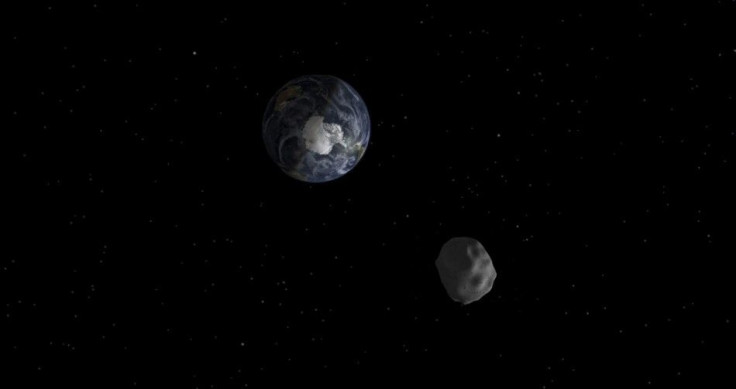Russian Scientists Claim ‘Mountain-Sized’ Asteroid Could Hit Earth In 3 Years [Video]

Russian scientists have discovered that in three years' time a cataclysmic event could happen on Earth. A "mountain-sized" asteroid that orbits the Earth could eventually hit the planet and end all of its inhabitants.
Asteroid UR116, as it's called by astrophysicist Vladimir Lipunov and his team of scientists, could potentially collide with Earth during its three-year orbital cycle. Described as a "huge, mountain-sized asteroid, Yahoo News claims at the moment UR116 poses no immediate threat to Earth. However, its unpredictable orbit around the planet should still be a cause of worry suggests Lipunov.
Vladimir Lipunov, a professor at Moscow State University, details in a short video how UR116 was discovered. He reportedly also elaborated on what could potentially happen when the 370-meter asteroid hits Earth. Entitled "Asteroid Attack," Yahoo claims the documentary was posted on the Russian Space Agency Web site on Sunday, Dec 7. In the video the Russian astrophysicist estimates UR116 would hit Earth with energy 1000 times more powerful than the meteor that exploded over Chelyabinsk, Russia in 2013. Likewise, he also gives caution on the unpredictability of its orbit around Earth. With its huge size it's allegedly difficult to calculate how it hurtles through the solar system, since per Yahoo its "trajectories are constantly being altered by the gravitational pull of nearby planets."
"We need to permanently track this asteroid, because even a small mistake in calculations could have serious consequences," Lipunov supposedly said in the video.
However, Natan Esmant, an expert with the official Space Research Institute in Moscow, assures the public that the asteroid is not likely to collide with Earth in the next three years. There's supposedly few evidence to prove that it could pose a threat to the planet in the next few decades. But looking at a prolonged period it's reportedly safe to assume a collision is bound to happen. Likewise, per Yahoo Esmant claims a more pressing issue at the moment is the estimated "100,000 near-Earth objects, such as asteroids and comets," which reportedly has the potential to cross with Earth's orbit.
Thus, per Inquisitr NASA is continuously monitoring the skies for possible threat to Earth coming from asteroids and comets. The use of conventional telescopes, radar and infrared detectors have reportedly been useful in hunting for asteroids such as UR116. Esmant also assures that "scientists have increasingly powerful tools to do this work."
Source:YouTube/ Телестудия Роскосмоса





















